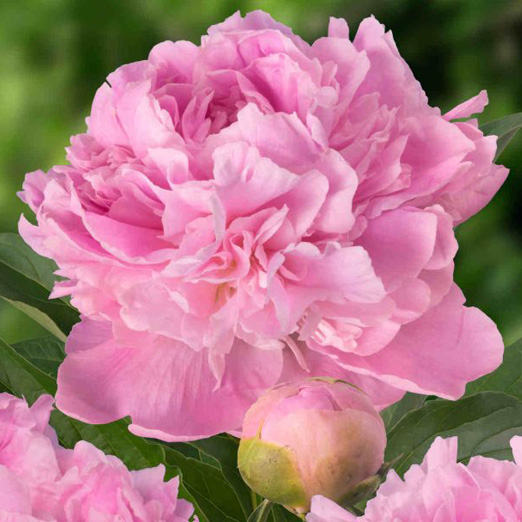How to grow Viburnum Plicatum
Winner of ‘Plant of the decade’ at the Virtual Chelsea Flower Show in 2020, it is easy to see why Viburnum plicatum is a must-have for gardens. Commonly known as Japanese Snowball, Viburnum plicatum is a deciduous and spreading bushy shrub with spring flowers that resemble snowballs!
Growing to heights of 3m with a spread of 1.5m, Viburnum plicatum flowers in spring and summer, bringing a beautiful array of white and pale pink flora. Once the petals fall from the flowers, your shrub will be covered in gorgeous and glossy bright red berries. With semi-evergreen foliage, you can expect Viburnums plicatum green foliage to turn red and purple in the autumn.
Native to China, Korea, Japan and Taiwan, Viburnum plicatum is ideal for ornamental UK gardens. In fact, several Viburnum plicatum cultivars have been given the Award of Garden Merit by RHS (Royal Horticultural Society), meaning they can be grown successfully under UK conditions. These cultivars include ‘Cascade’, ‘Mariesii’, ‘Pink Beaut’y, ‘Popcorn’ and ‘Summer Snowflake’.
Ready to learn more about the ‘Plant of the decade’? Read on to find out everything there is to know about growing Viburnum plicatum...

Key Information
Soil pH
Position

Hardiness

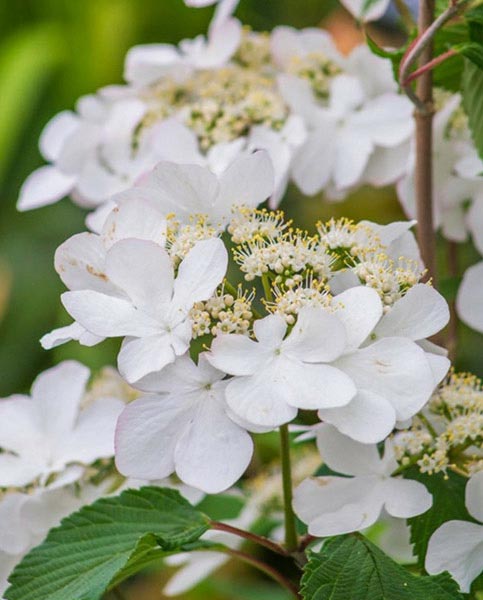
Where & when to plant Viburnum Plicatum
The best time to plant Viburnum plicatum is in the autumn, to allow the roots to develop prior to the winter frosts. As a tall shrub, it is best placed at the back of a garden border. You can also grow Viburnum plicatum in containers, mixed containers and pots.
How to plant Viburnum Plicatum
- Start by choosing a border, pot or container in a position that benefits from 2-4 hours of sunlight a day to plant your Viburnum plicatum in. Ideally, this position will benefit from morning sun and evening sun, rather than the stronger midday sun
- Once you have found your position, make sure that the soil is well-draining. If your soil is not, you can add sand or gravel to create drainage
- Dig a hole that’s 2-3 times as wide and deep as the roots. Add your root ball to the soil and backfill with the soil removed. Tamp the soil around the plant and settle in by watering
- If you are planting multiple Viburnum plicatum or neighbouring plants, give 1m of space between each to allow their roots and top growth to spread. While your Viburnum plicatum is establishing, water 2-3 times per week.
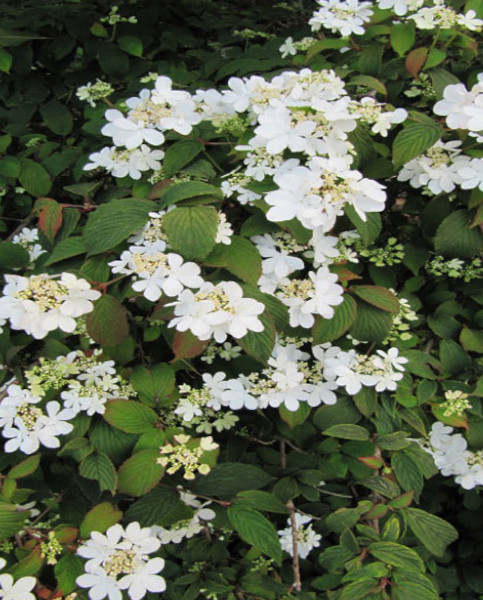
What to plant with Viburnum Plicatum
Grow Viburnum plicatum with smaller plants that bloom in the spring and summer. If growing your Viburnum plicatum at the back of a border, choose neighbouring plants that are shorter that enjoy similar soil and bloom in the same period. Black-eyed Susan (Rudbeckia) is one such choice that blossoms in late summer, adding sunflower-style interest to any garden border. Due to the ornamental nature of Viburnum plicatum, you could create an oriental-inspired bed with pink spring-bloomers such as rhodedendrons or pair with other viburnums such as Viburnum opulus.
Please contact our excellent Customer Care Team if you would like any help or planting tips for your Viburnum plicatum. Below are a few ideas to help get you started.
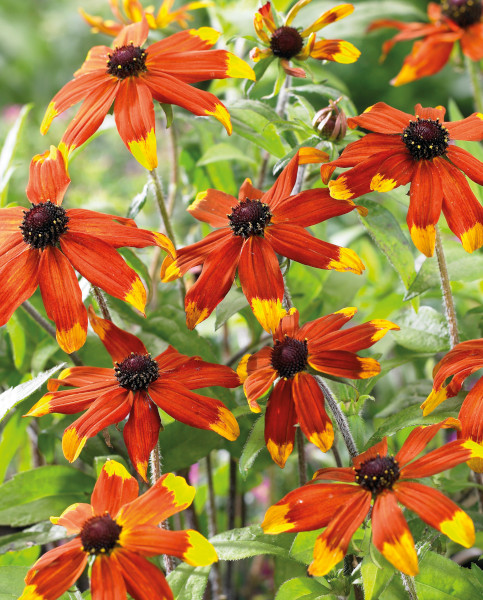
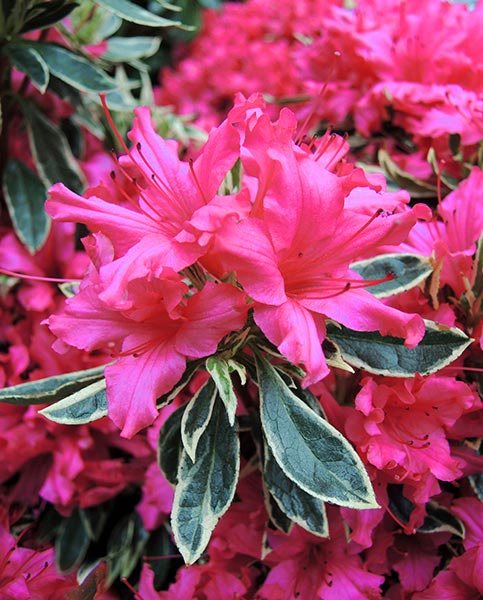
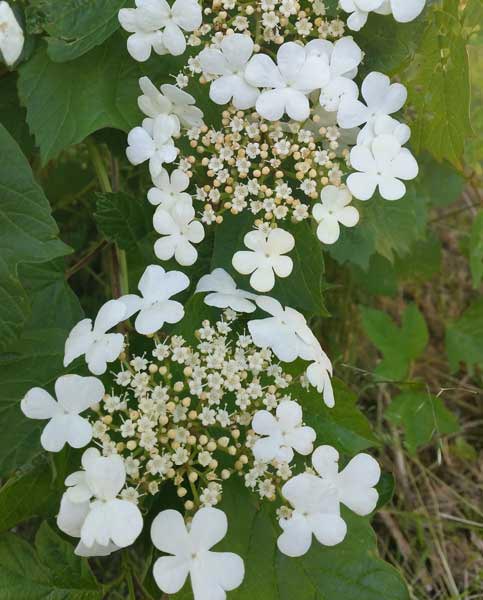
How to care for Viburnum Plicatum
Pruning & Deadheading
Viburnums flower on old wood, so do not prune too late in the year as you might ruin the following year’s growth - autumn is also a good time to shape the plant. As always, remove any dead, damaged or diseased stems as you see them. Viburnum plicatum tolerates hard renovative pruning in the spring, however, it is important not to hard prune the plant until it is established.
Watering
Viburnum plicatum should be watered regularly during its growth phase - this means 2-3 times per week. Once established, Viburnum plicatum is fully hardy and can tolerate moderate watering. Be sure to keep an eye on the soil for drainage.
Cold Protection
As a fully hardy shrub, Viburnum plicatum can tolerate temperatures as low as -15°C. Choose a position for Viburnum plicatum with shelter from cold and harsh winds if you are concerned.
Pests & Diseases
While there are no serious pests or diseases to look out for with Viburnum plicatum, its love for moist, well-draining soil may cause issues. If your soil has a lack of drainage or the plant is overwatered, Viburnum plicatum may suffer from root rot; this is a disease where oxygen cannot reach the roots of a plant, so be mindful.
How to propagate Viburnum Plicatum
Propagate your Viburnum plicatum plant during spring by taking softwood cuttings. Use clean scissors or secateurs to make sure you do not pass diseases on from other plants to your new cuttings

From healthy softwood shoots, trim 10-15cm of length off. A good tip is to add the end of the cuttings directly to a small pot of water to reduce moisture loss

Once you have finished taking your cuttings, remove the leaves from the lower 3-5cm of each stem, leaving a small bit of leaf joint intact. Before planting in a pot of cutting soil, trim the bottom of each cutting diagonally and add each to a corner of your pot to help keep your cuttings upright during growth then water in to settle

Add a plastic covering or cloche to your cuttings pot to encourage humidity. Place your pot of cuttings in a sunny and warm position out of direct sunlight. Water regularly to keep the soil moist and check for roots after 3 weeks by gently pulling on each cutting.
Common Viburnum Plicatum Questions
Where does Viburnum plicatum grow?
Viburnum plicatum grows in moist, well-draining soil. Viburnum plicatum can be grown in containers, mixed shrub beds or flowerpots.
How do you prune Viburnum plicatum?
You can prune Viburnum plicatum lightly while it is growing, wait until the late winter to hard prune.
Is Viburnum plicatum invasive?
Viburnum plicatum is sometimes seen as an invasive plant due to its spreading nature. However, this can be reduced by pruning shrubs often. Also, leave plenty of space between Viburnum plicatum and neighbouring plants to reduce this.



